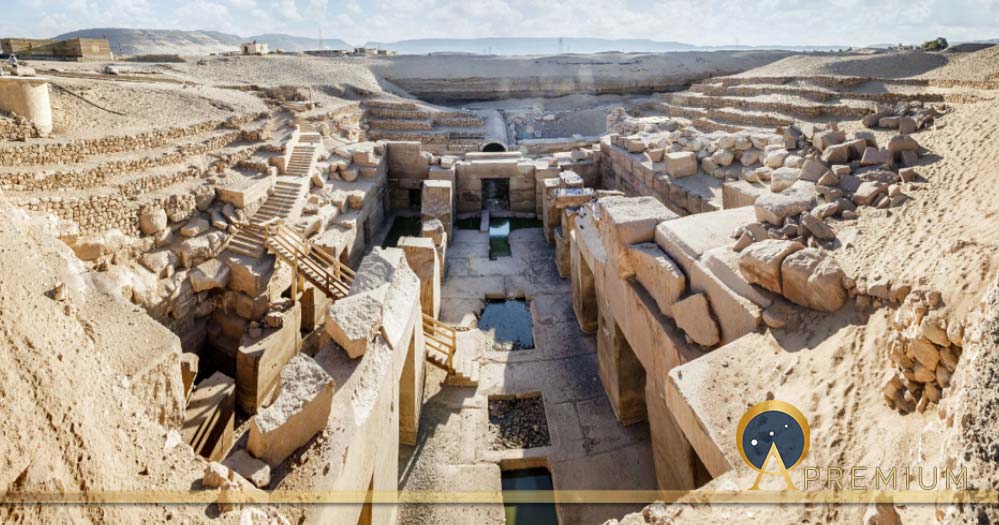The True Age of the Osirion at Abydos, an Antediluvian Temple
By 5400 BC Abydos in Egypt was a thriving city, and 2,000 years later pre-dynastic pharaohs were still building shrines, temples and mortuaries at the site. Seti I added his own masterpiece in the 13th century BC, an elegant temple featuring a series of interconnected halls and side chambers, covered from floor to ceiling in exquisite friezes, murals and hieroglyphs. Still, people had long before been coming here to witness another hidden wonder - the Osirion, perhaps an antediluvian structure?
The Inland Sea of North Africa
About 12,000 years ago the region bore no resemblance to what it is today. The climate was wetter, it sustained a lush landscape, and to the west, where now lies an endless desert, there existed an inland sea, much of which drained into the Atlantic when the events that generated the great flood, and closed the Younger Dryas, overhauled the region. Referring to an older source, Diodorus of Sicily describes how it: "disappeared from sight in the course of an earthquake, when those parts of it which lay toward the ocean were torn asunder," leaving behind the Sahara. A small saltwater lake at Siwa is all that remains.

The Osirion bears no resemblance to Seti’s temple above it. (Image © Freddy Silva)
The Enigma of Osirion’s Architecture
The course of the Nile was also seven miles closer to the town, its waters reaching another kind of temple, named for the Egyptian god of resurrection Osiris — the Osirion. In terms of construction and style, the temple bears no resemblance to Seti’s. It is stark yet hauntingly beautiful, a fine example of simplicity and economy of line expressed with heavyset blocks of red granite, ferried from a quarry 200 miles (321 kilometres) away. The construction logistics pose a conundrum for any engineer, yet the Osirion belongs to a remote age, created with the sole intent of defying time.

Plan of the Osirion at Abydos (Public Domain)
The Osirion consists of two rows of columns connected by substantial architraves upon which once stood a voluminous stone roof. These are poised on a raised rectangular platform surrounded by a deep moat cut into the stone; two ascending staircases lead out of the water and onto the platform, where lie two sunken rectangular pools.
Like this Preview and want to read on? You can! JOIN US THERE ( with easy, instant access ) and see what you’re missing!! All Premium articles are available in full, with immediate access.
For the price of a cup of coffee, you get this and all the other great benefits at Ancient Origins Premium. And - each time you support AO Premium, you support independent thought and writing.
Freddy Silva is a best-selling author of ancient civilizations, earth mysteries and ancient systems of knowledge, with six published works, including his very latest, The Missing Lands: Uncovering Earth’s Pre-flood Civilization.
Top Image: The Osirion temple at Abydos, Egypt by Konstantin (Adobe Stock)
By Freddy Silva
















